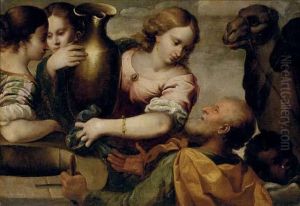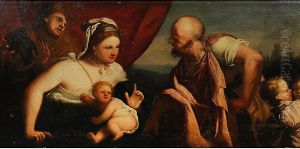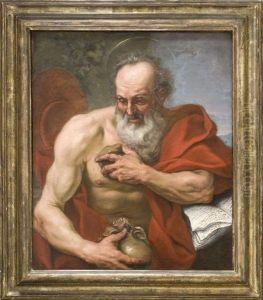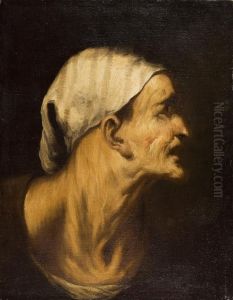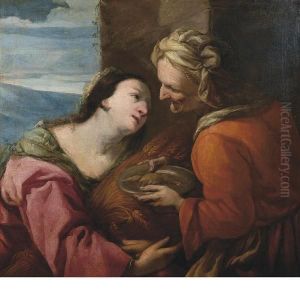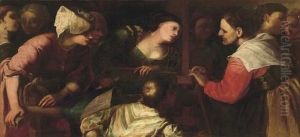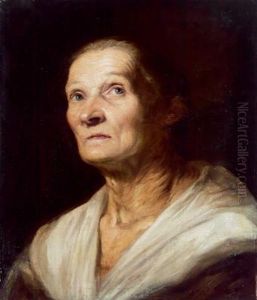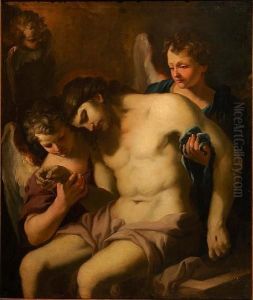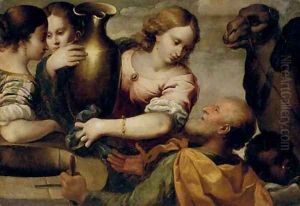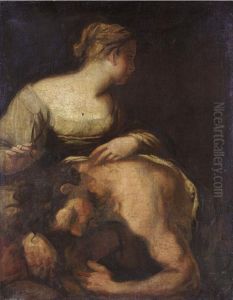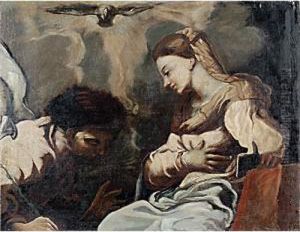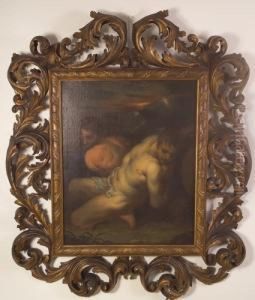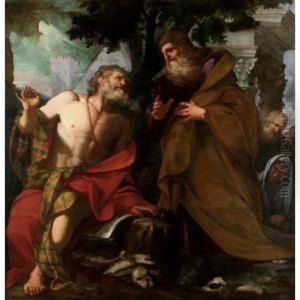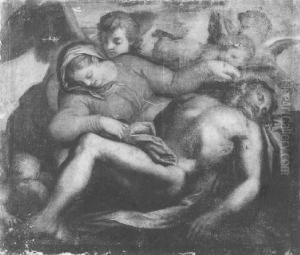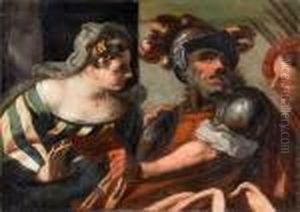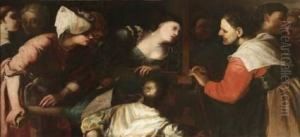Antonio Carneo Concordia Sagittaria Paintings
Antonio Carneo was an Italian painter of the Baroque period, born in 1637 in Concordia Sagittaria, a small town in the Veneto region of Italy. His artistic career primarily unfolded in the 17th century, a time when the Baroque style was flourishing across Europe. Carneo is often associated with the Venetian School, which was noted for its vibrant color, emphasis on light, and expressive brushwork.
Carneo's early life is somewhat obscure, but it is known that he received his initial artistic training in the Veneto region. He was influenced by the works of great Venetian masters such as Paolo Veronese and Tintoretto, adopting their rich color palette and dynamic compositions. However, Carneo also developed a distinct style characterized by a more intimate approach to his subjects, often focusing on religious and mythological themes with a personal and emotive touch.
Throughout his career, Antonio Carneo was highly regarded for his portraiture, as well as his religious and mythological scenes. His ability to capture the emotional depth and humanity of his subjects set him apart from many of his contemporaries. Carneo's work was not limited to paintings; he also produced a number of drawings and etchings that demonstrate his skillful handling of line and form.
Despite his talent and contributions to the Venetian art scene, Antonio Carneo has not received the same level of recognition as some of his more famous contemporaries. Nevertheless, his works can be found in various churches and collections across Italy, showcasing his adept use of color, light, and composition to evoke emotion and narrative depth.
Antonio Carneo passed away in 1692, leaving behind a body of work that, while not as widely known today, represents an important facet of the Baroque period in Italian art. His paintings continue to be studied and appreciated for their artistic merit and the unique perspective they provide on the era's religious and cultural themes.
